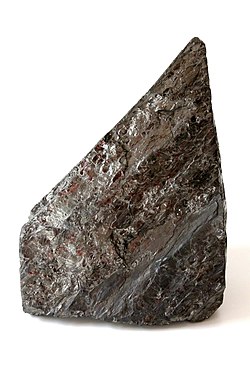Anthracite is a dense, hard-burning coal with 86-97% carbon content that produces the highest energy output of all coal types.
Physical Properties
Anthracite exhibits a distinctive submetallic luster and ranks as the most metamorphosed form of coal. It has a hardness of 2.75-3 on the Mohs scale and a relative density of 1.3-1.4. The coal burns with a short, blue, smokeless flame and proves difficult to ignite compared to other coal varieties.
Global Distribution and Production
The largest anthracite deposits exist in Northeastern Pennsylvania, containing an estimated seven billion short tons. China dominates global production, with other significant producers including:
| Country | Production Role |
|---|---|
| Russia | Major Producer |
| Ukraine | Major Producer |
| Vietnam | Growing Producer |
| South Africa | High-grade Producer |
Total worldwide production reached 615 million tons in 2020.
Commercial Classifications
Standard Grade
Used primarily for power generation, containing:
- Maximum 15% moisture
- Maximum 20% ash
- Minimum 73% fixed carbon
High Grade (HG)
Employed in metallurgy, featuring:
- Maximum 15% ash
- Minimum 80% fixed carbon
- Maximum 1% sulfur
Ultra High Grade (UHG)
The purest form, containing:
- Minimum 85% fixed carbon
- Maximum 12% ash
- Maximum 0.6% sulfur
Historical Significance
The first commercial anthracite mining in the United States began in 1808 when John and Abijah Smith shipped coal down the Susquehanna River from Plymouth, Pennsylvania. The Delaware, Lackawanna and Western Railroad branded itself as “The Road of Anthracite,” promoting clean rail travel with their famous Phoebe Snow advertising campaign.
Modern Applications
Today’s uses include:
- Domestic heating in stoves and furnaces
- Metallurgical processes
- Water filtration
- Charcoal briquette production
Current U.S. production averages five million tons annually, with Pennsylvania contributing 1.8 million tons. The wholesale price in 2021 was $107 per short ton, reflecting its premium status among coal types.
Anthracite, also known as hard coal and black coal, is a hard, compact variety of coal that has a submetallic lustre. It has the highest carbon content, the fewest impurities, and the highest energy density of all types of coal and is the highest ranking of coals.
| Metamorphic rock | |
 Anthracite coal | |
| Composition | |
|---|---|
| 86–97% carbon |
The Coal Region of Northeastern Pennsylvania in the United States has the largest known deposits of anthracite coal in the world with an estimated reserve of seven billion short tons. China accounts for the majority of global production; other producers include Russia, Ukraine, North Korea, South Africa, Vietnam, Australia, Canada, and the United States. Total production in 2020 was 615 million tons.
Anthracite is the most metamorphosed type of coal, but still represents low-grade metamorphism, in which the carbon content is between 86% and 97%. The term is applied to those varieties of coal which do not give off tarry or other hydrocarbon vapours when heated below their point of ignition. Anthracite is difficult to ignite, and burns with a short, blue, and smokeless flame.
Anthracite is categorized into several grades. Standard grade is used predominantly in power generation, and high grade (HG) and ultra high grade (UHG), are used predominantly in the metallurgy sector. Anthracite accounts for about 1% of global coal reserves, and is mined in only a few countries around the world.
English
Etymology
From Latin, from Ancient Greek ἀνθρακῖτις (anthrakîtis, “a kind of coal
...
